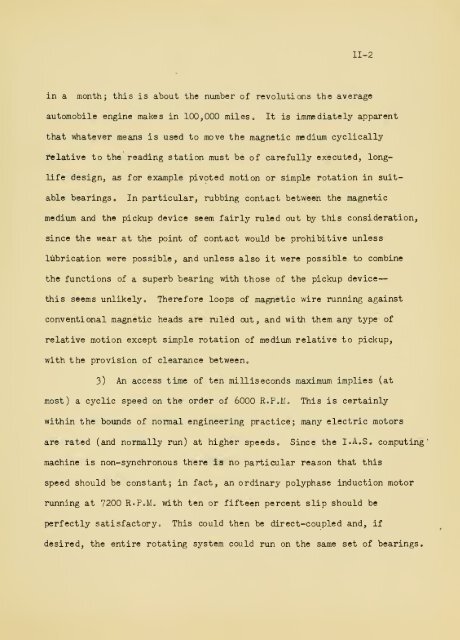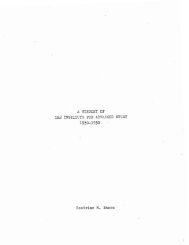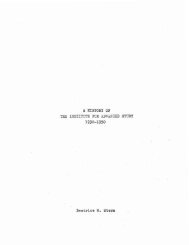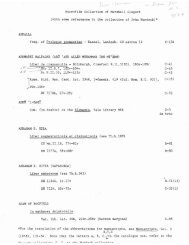First progress report on a multi-channel magnetic drum inner ...
First progress report on a multi-channel magnetic drum inner ...
First progress report on a multi-channel magnetic drum inner ...
Create successful ePaper yourself
Turn your PDF publications into a flip-book with our unique Google optimized e-Paper software.
II-2<br />
in a m<strong>on</strong>th; this is about the number of revoluti<strong>on</strong>s the average<br />
automobile engine makes in 1CX3,000 miles o It is immediately apparent<br />
that whatever means is used to move the <strong>magnetic</strong> medium cyclically<br />
Relative to the reading stati<strong>on</strong> must be of carefully executed, l<strong>on</strong>g-<br />
life design, as for example pivoted moti<strong>on</strong> or simple rotati<strong>on</strong> in suit-<br />
able bearings. In particular, rubbing c<strong>on</strong>tact between the <strong>magnetic</strong><br />
medium and the pickup device seem fairly ruled out by this c<strong>on</strong>siderati<strong>on</strong>,<br />
since the wear at the point of c<strong>on</strong>tact would be prohibitive unless<br />
lubricati<strong>on</strong> were possible, and unless also it were possible to combine<br />
the functi<strong>on</strong>s of a superb bearing with those of the pickup device<br />
this seems unlikely. Therefore loops of <strong>magnetic</strong> wire running agsdnst<br />
c<strong>on</strong>venti<strong>on</strong>al <strong>magnetic</strong> heads are ruled out, and with them any type of<br />
relative moti<strong>on</strong> except simple rotati<strong>on</strong> of medium relative to pickup,<br />
with the provisi<strong>on</strong> of clearcince between.<br />
3) An access time of ten millisec<strong>on</strong>ds maximum implies (at<br />
most) a cyclic speed <strong>on</strong> the order of 6000 R.P.tL This is certainly<br />
within the bounds of n<strong>on</strong>rval engineering practice; many electric motors<br />
are rated (and normally run) at higher speeds. Since the I.A.S. computing'<br />
machine is n<strong>on</strong>-synchr<strong>on</strong>ous there is no particular reas<strong>on</strong> that this<br />
speed should be c<strong>on</strong>stant; in fact, an ordinary polyphase inducti<strong>on</strong> motor<br />
running at 7200 R»P.M„ with ten or fifteen percent slip should be<br />
perfectly satisfactory. This could then be direct-coupled and, if<br />
desired, the entire rotating system could run <strong>on</strong> the same set of bearings.<br />
—
















